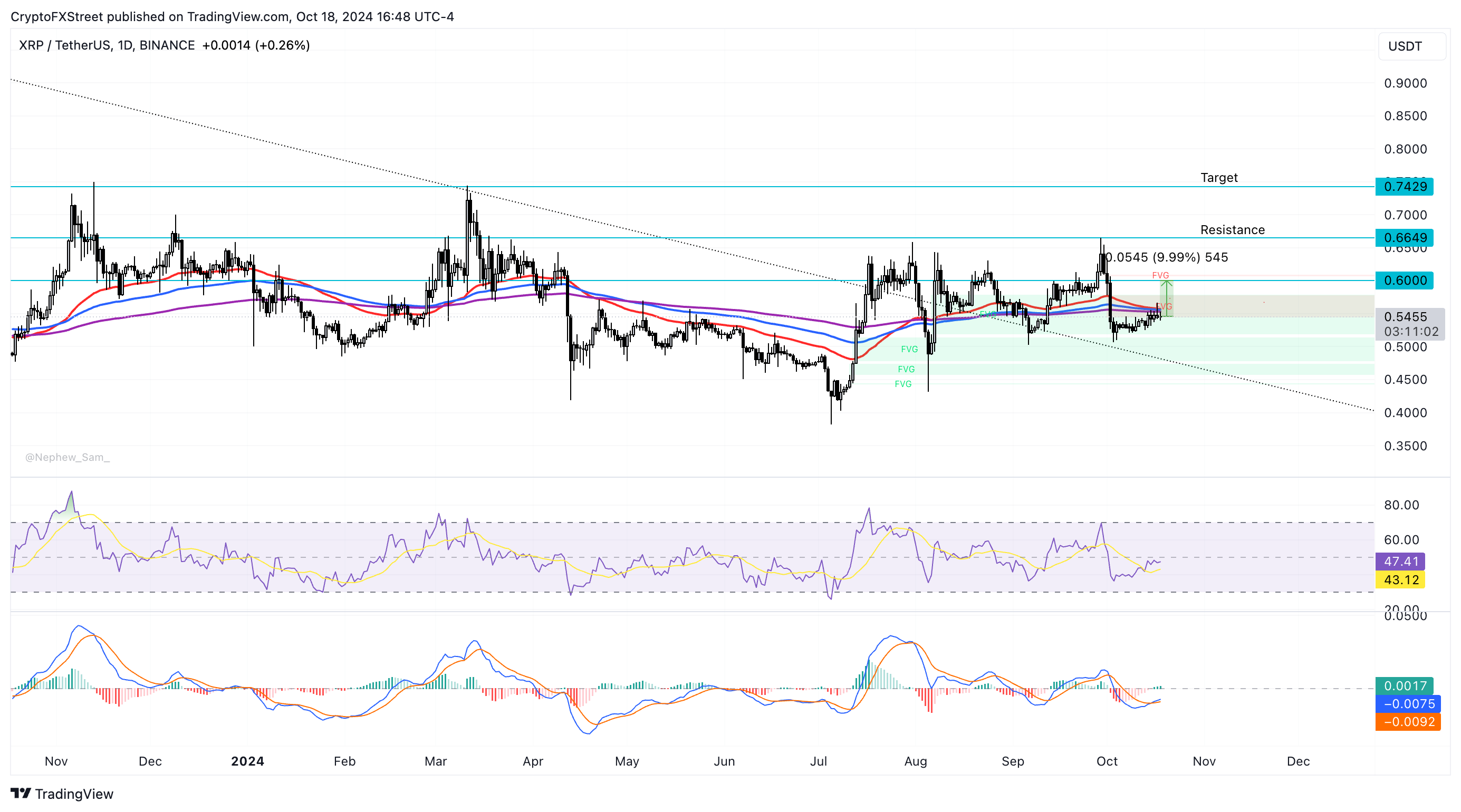XRP hovers above $0.55 as SEC raises no argument on the token’s legal clarity
- XRP traders around $0.55 on Friday, gains less than 1% on the day.
- SEC’s appeal in Ripple lawsuit is now publicly available and does not raise a question on the altcoin’s legal status.
- SEC vs. Ripple lawsuit’s July 2023 ruling provided non-security status to XRP, SEC appeal leaves it out of the legal arguments.
Ripple (XRP) gains on Friday as traders digest the developments in the Securities & Exchange Commission’s (SEC) appeal against the final lawsuit ruling. In August 2024, Judge Analisa Torres imposed a $125 million fine on Ripple for their institutional XRP sale and the altcoin’s non-security status in exchange-based transactions was maintained.
XRP is trading around $0.55 early on Friday.
Daily Digest Market Movers: SEC appeal in Ripple lawsuit leaves out XRP
- The US SEC has contested the final ruling in the Ripple lawsuit, the appeal documents were made publicly available on Friday.
- Documents confirm that the SEC has not commented on the legal clarity of XRP, the native token of the XRP Ledger.
- XRP token remains a non-security in transactions on exchange platforms, per Judge Torres’ July 2023 ruling.
- XRP traders digested the recent developments in the lawsuit and rejoiced as the altcoin retains its legal clarity and this likely paves the way for approval of XRP Exchange Traded Funds (ETF) in the US.
Technical analysis: XRP could gain 10%
XRP broke out of its downward trend on August 9, 2024, since then the altcoin has been rangebound. XRP could gain nearly 10% and test resistance at $0.60, the psychologically important level for the token.
The Relative Strength Index (RSI) reads 47.41, under 50. The Moving Average Convergence Divergence (MACD) indicator flashes green histogram bars above the neutral line, meaning there is underlying positive momentum in XRP price trend.

XRP/USDT daily chart
XRP could find support at the August 5 low of $0.5319, or the July 5 low of $0.3843, if there is a correction in XRP price.
Bitcoin, altcoins, stablecoins FAQs
Bitcoin is the largest cryptocurrency by market capitalization, a virtual currency designed to serve as money. This form of payment cannot be controlled by any one person, group, or entity, which eliminates the need for third-party participation during financial transactions.
Altcoins are any cryptocurrency apart from Bitcoin, but some also regard Ethereum as a non-altcoin because it is from these two cryptocurrencies that forking happens. If this is true, then Litecoin is the first altcoin, forked from the Bitcoin protocol and, therefore, an “improved” version of it.
Stablecoins are cryptocurrencies designed to have a stable price, with their value backed by a reserve of the asset it represents. To achieve this, the value of any one stablecoin is pegged to a commodity or financial instrument, such as the US Dollar (USD), with its supply regulated by an algorithm or demand. The main goal of stablecoins is to provide an on/off-ramp for investors willing to trade and invest in cryptocurrencies. Stablecoins also allow investors to store value since cryptocurrencies, in general, are subject to volatility.
Bitcoin dominance is the ratio of Bitcoin's market capitalization to the total market capitalization of all cryptocurrencies combined. It provides a clear picture of Bitcoin’s interest among investors. A high BTC dominance typically happens before and during a bull run, in which investors resort to investing in relatively stable and high market capitalization cryptocurrency like Bitcoin. A drop in BTC dominance usually means that investors are moving their capital and/or profits to altcoins in a quest for higher returns, which usually triggers an explosion of altcoin rallies.

